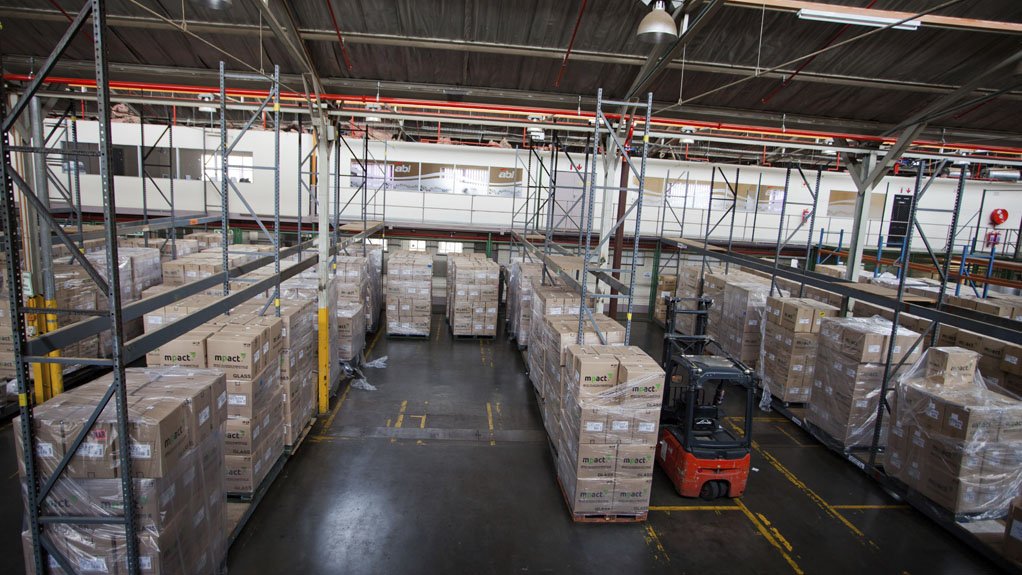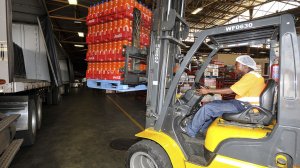Need for industry to reconsider production, storage and distribution



END-TO-END STRATEGIC OPPORTUNITY Viewing the warehousing and storage industry as an entire supply chain rather than siloed disciplines
WAREHOUSE SATISFACTION Engineering the supply chain from customer backwards involves closely managing inventory velocity
As large amounts of working capital continue to be tied up in high inventory levels, which is often paired with slow reaction times to market changes, beverage company Coca-Cola Beverages South Africa (CCBSA) asserts that this prompts the warehousing and storage industry to reconsider the way in which products are stored, packed and distributed on an ongoing basis.
CCBSA warehouse services manager Yolandi Mitchell says it also prompts the industry to view the entire supply chain as an end-to-end strategic opportunity, rather than “siloed disciplines each driving its own metrics”.
“In an increasing competitive landscape, companies are required to spend a massive amount of money on market-facing activities while looking to substantially reduce costs in manufacturing or logistics disciplines to fund such activities,” comments Mitchell.
Moreover, she points out that to mitigate these challenges, it is necessary to understand the customer better, which will positively influence order patterns to bring discipline and smoothed activity to the supply chain.
She notes that customer collaboration in, for example, physical infrastructure changes at the point of delivery or adopting delivery times outside peak hours facilitate more efficient activity upwards in the supply chain, with a direct benefit in the warehouse.
“Engineering the supply chain from the customer backwards involves closely managing inventory velocity. The faster inventory moves from the production line to the customer, the less logistics buffers are needed, resulting in fewer warehouses, primary distribution trucks and forklifts, as well as less labour, less double handling,” she highlights.
Mitchell illustrates her point by stating that, in the beverage industry, manufacturing cost for every case is roughly half the cost of the logistics cost for every case.
The design should be to move from a supply- focused system design to a demand-focused system design, she comments.
Mitchell explains that the supply-focused system design entails establishing machine efficiencies that result in long production runs and high volumes of products having to be stored at a time. Whereas the demand-focused system design includes high-frequency product replenishment, which eliminates high inventory levels, subsequently leading to less warehouse space being required.
“In the demand-focused system design, a significant amount of investment is also made into manufacturing flexibility, where multiple changeovers between different product-runs drive reduced stock-keeping requirements and investments in working capital.
“Higher customer service is enabled, owing to a responsive manufacturing design that effectively enables production-to-demand,” Mitchell maintains.
She notes that the move towards managing a reduced number of mega sites, rather than a high number of smaller, fixed-cost-heavy facili- ties, paired with strategic third-party distribution partners, ensure better reaction time and quality of response to customer requirements.
This can be achieved only by creating the correct capability at mega sites, be it from an equipment, process design or a human resources point of view, she adds.
Mitchell points out that CCBSA set out to become the premier customer and market development company in South Africa. One of the key drivers behind this was to become highly efficient and flexible in the manufacturing and logistics industries.
CCBSA also sought to ensure that the correct product is available at the right time and at the right quality to respond to market requirements, she adds.
Mitchell illustrates that some of the key changes that the organisation implemented included investments in manufacturing to create mostly self-sufficient regions. This included excess manufacturing capacity to adapt to market changes while changing from long-run lengths to shorter product-cycle times.
She adds that other changes included upstream order management to deliver orders to the warehouse that can optimally use layer- picking equipment, as well as fixed-order cut-off times and dedicated customer delivery days.
“These changes were made because the organisation was experiencing declining margins and a turnaround strategy was needed. The requirement was a ‘whole-business’ change, ensuring that the business becomes more market facing, more responsive to customer requirements and more productive in its day-to-day operations,” Mitchell emphasises.
She points out that one of the tangible benefits as a result of the changes was reduced inventory levels – from 15 days on average to four days – with some core product produced daily and significant working capital saved.
“When setting out on the journey of agile lean logistics in support of excellent customer service, the sequence of implementation of the interrelated changes is of critical importance.”
However, she emphasises that it is not possible if the metrics in the individual departments supersede the overall goal of the organisation.
“One has to understand that an on-cost in one area might be necessary to allow for a bigger cost benefit in another. Breaking down the silos in the organisation is a critical success factor,” concludes Mitchell.
Article Enquiry
Email Article
Save Article
Feedback
To advertise email advertising@creamermedia.co.za or click here
Comments
Announcements
What's On
Subscribe to improve your user experience...
Option 1 (equivalent of R125 a month):
Receive a weekly copy of Creamer Media's Engineering News & Mining Weekly magazine
(print copy for those in South Africa and e-magazine for those outside of South Africa)
Receive daily email newsletters
Access to full search results
Access archive of magazine back copies
Access to Projects in Progress
Access to ONE Research Report of your choice in PDF format
Option 2 (equivalent of R375 a month):
All benefits from Option 1
PLUS
Access to Creamer Media's Research Channel Africa for ALL Research Reports, in PDF format, on various industrial and mining sectors
including Electricity; Water; Energy Transition; Hydrogen; Roads, Rail and Ports; Coal; Gold; Platinum; Battery Metals; etc.
Already a subscriber?
Forgotten your password?
Receive weekly copy of Creamer Media's Engineering News & Mining Weekly magazine (print copy for those in South Africa and e-magazine for those outside of South Africa)
➕
Recieve daily email newsletters
➕
Access to full search results
➕
Access archive of magazine back copies
➕
Access to Projects in Progress
➕
Access to ONE Research Report of your choice in PDF format
RESEARCH CHANNEL AFRICA
R4500 (equivalent of R375 a month)
SUBSCRIBEAll benefits from Option 1
➕
Access to Creamer Media's Research Channel Africa for ALL Research Reports on various industrial and mining sectors, in PDF format, including on:
Electricity
➕
Water
➕
Energy Transition
➕
Hydrogen
➕
Roads, Rail and Ports
➕
Coal
➕
Gold
➕
Platinum
➕
Battery Metals
➕
etc.
Receive all benefits from Option 1 or Option 2 delivered to numerous people at your company
➕
Multiple User names and Passwords for simultaneous log-ins
➕
Intranet integration access to all in your organisation
















